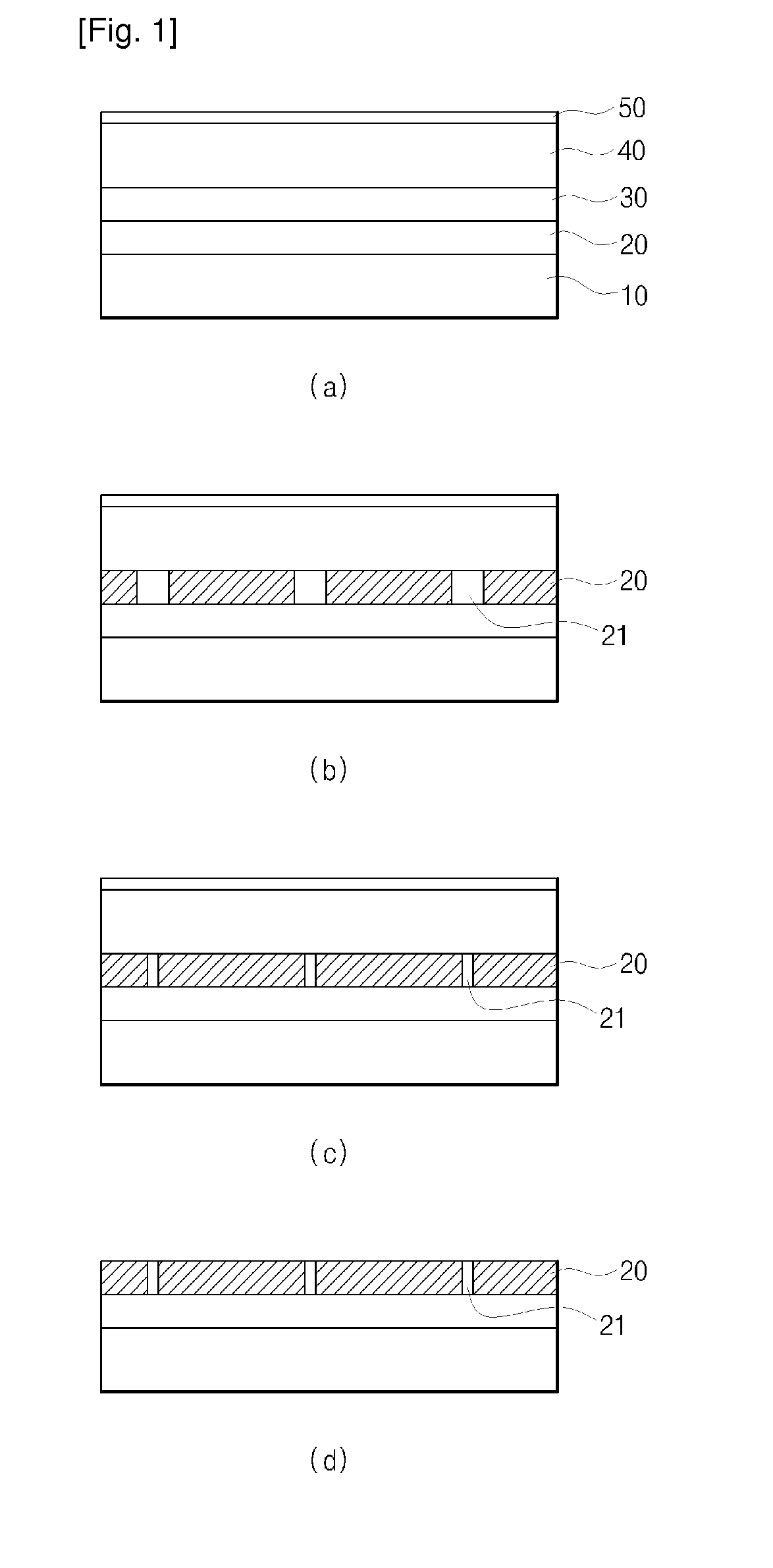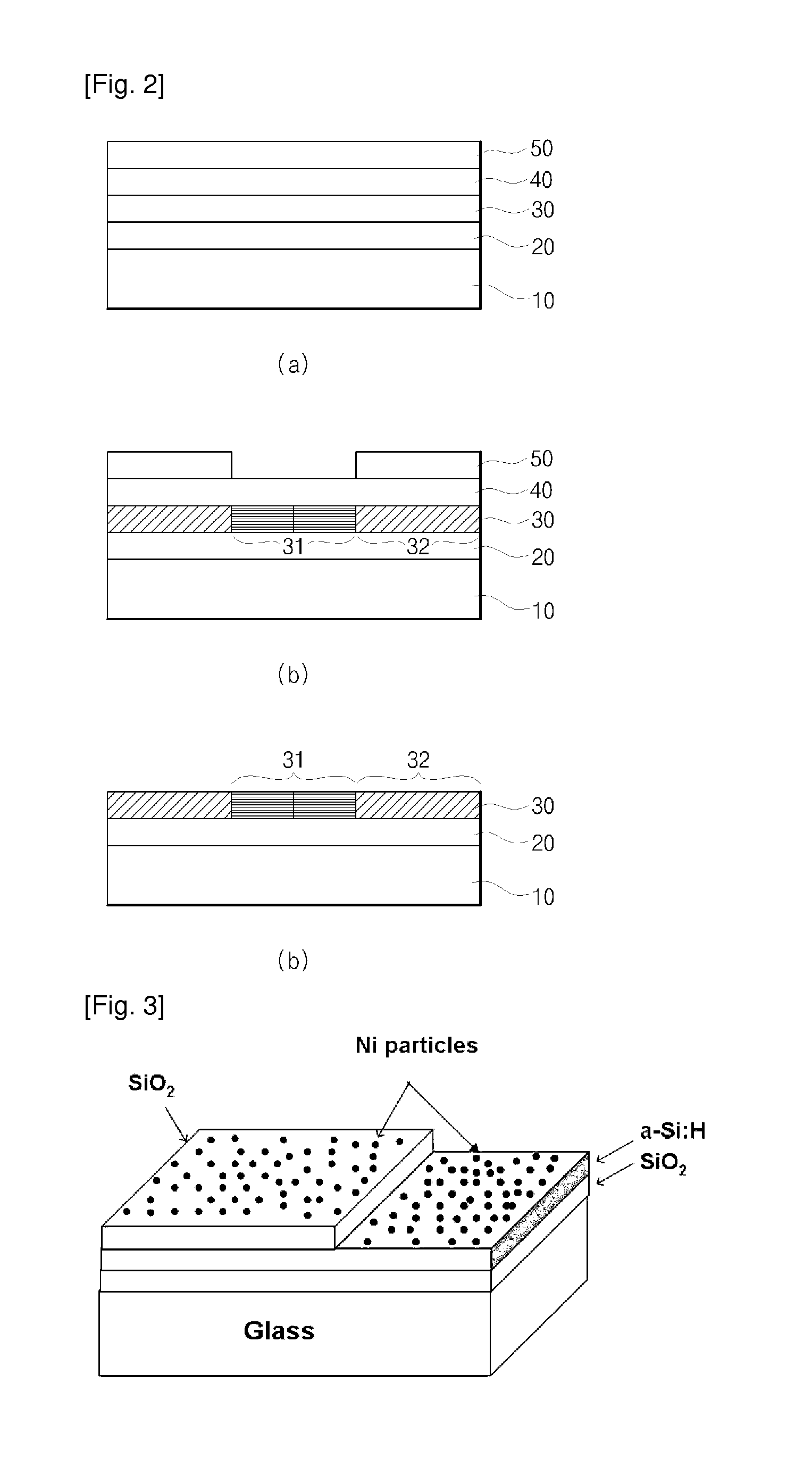Method for phase transition of amorphous material
- Summary
- Abstract
- Description
- Claims
- Application Information
AI Technical Summary
Benefits of technology
Problems solved by technology
Method used
Image
Examples
Embodiment Construction
[0024]According to an embodiment of the present invention, a method for phase transition of an amorphous material based on metal induced lateral crystallization includes forming an amorphous silicon layer on a substrate, depositing a Ni metal layer on part of the amorphous silicon layer, and heat-treating the amorphous silicon layer to cause phase transition of the amorphous silicon, wherein the Ni metal layer is deposited to an average thickness of 0.79 Å or less.
[0025]Mode for the Invention
[0026]FIG. 1 is a flow diagram illustrating crystallization of amorphous silicon based on Ni-MILC.
[0027]In a method for phase transition of an amorphous material for use in fabrication of a thin film transistor according to an embodiment of the invention, the thickness of a metal deposited on a substrate is adjusted during metal induced lateral crystallization used for crystallization of the amorphous material, thereby minimizing current leakage.
[0028]Next, the metal induced lateral crystallizat...
PUM
 Login to View More
Login to View More Abstract
Description
Claims
Application Information
 Login to View More
Login to View More - R&D
- Intellectual Property
- Life Sciences
- Materials
- Tech Scout
- Unparalleled Data Quality
- Higher Quality Content
- 60% Fewer Hallucinations
Browse by: Latest US Patents, China's latest patents, Technical Efficacy Thesaurus, Application Domain, Technology Topic, Popular Technical Reports.
© 2025 PatSnap. All rights reserved.Legal|Privacy policy|Modern Slavery Act Transparency Statement|Sitemap|About US| Contact US: help@patsnap.com



